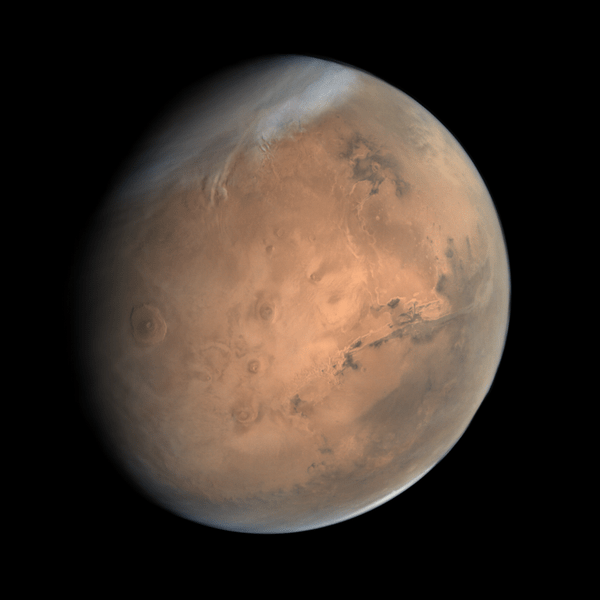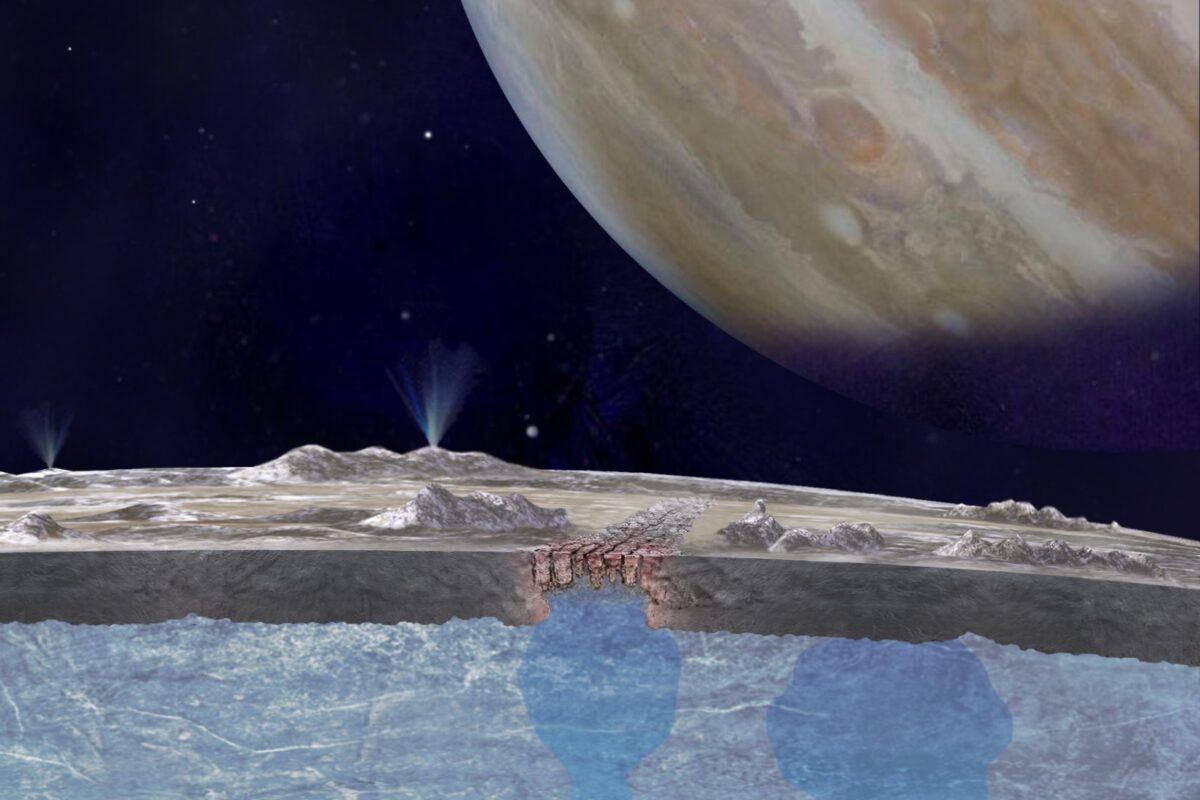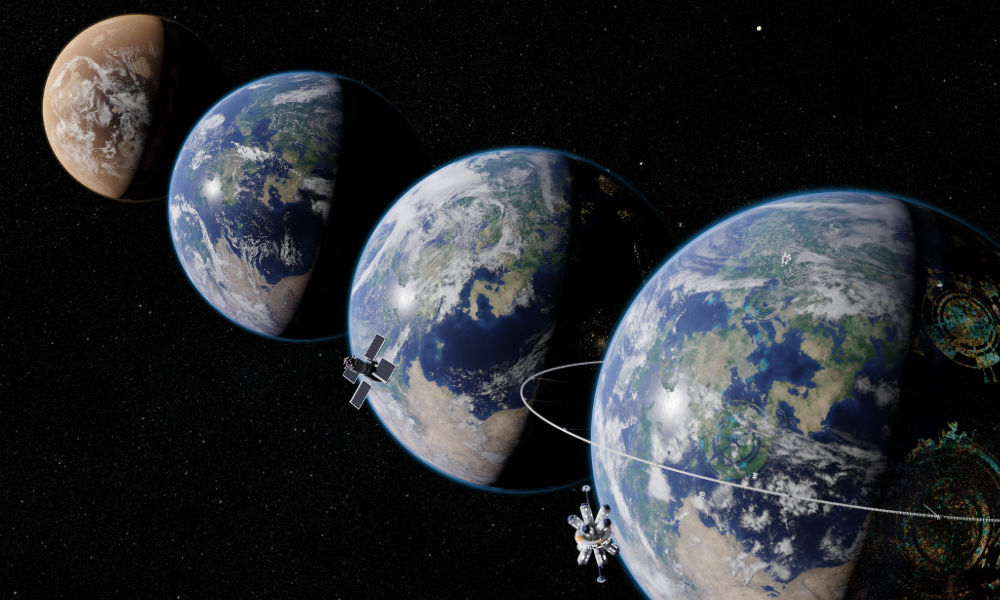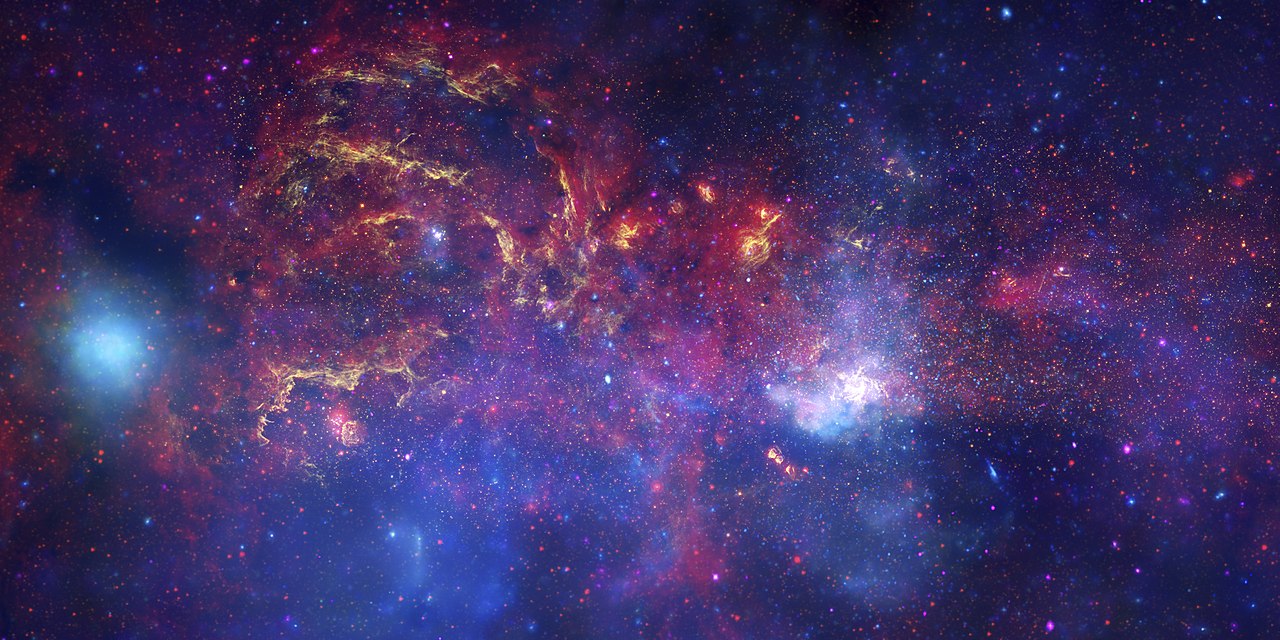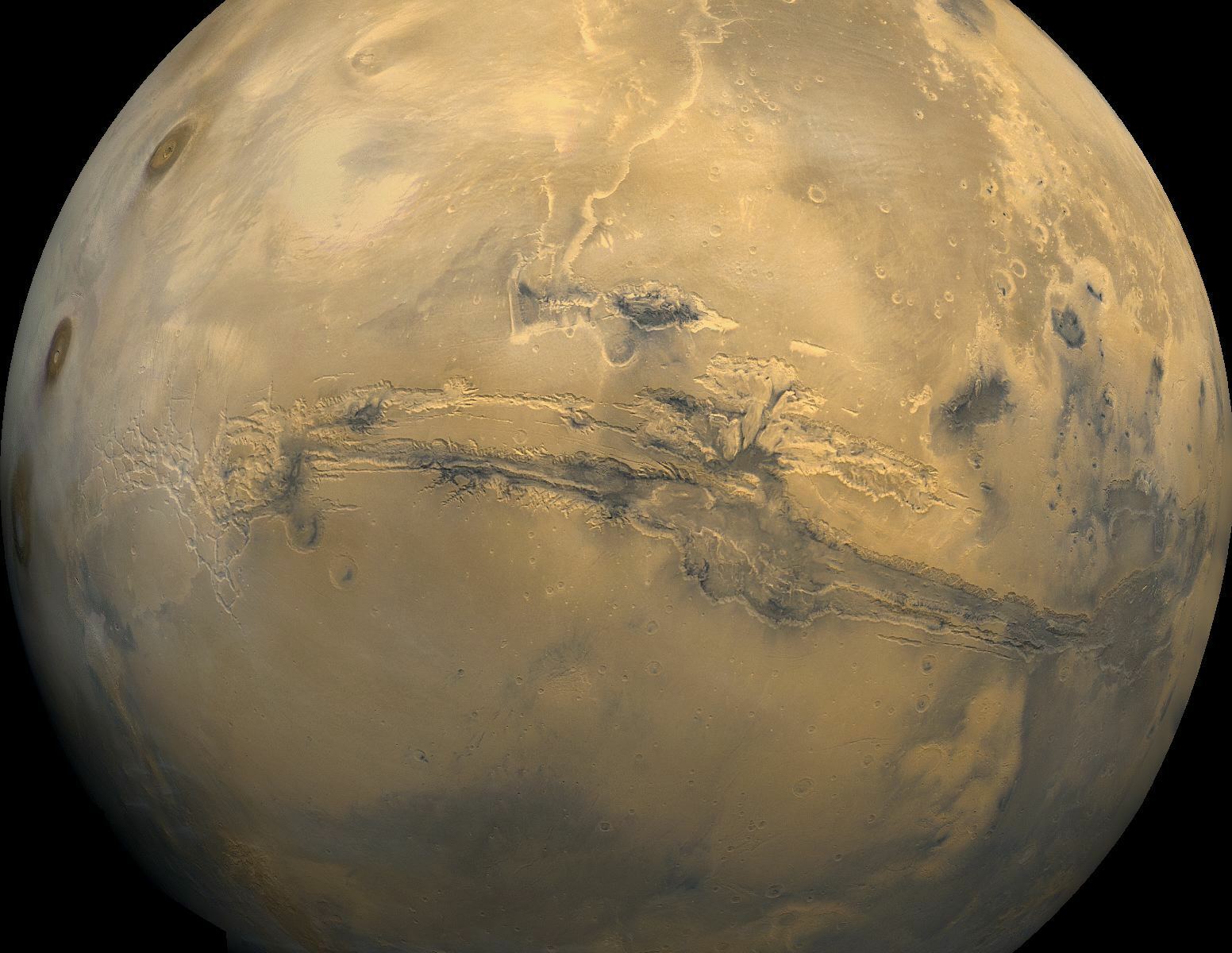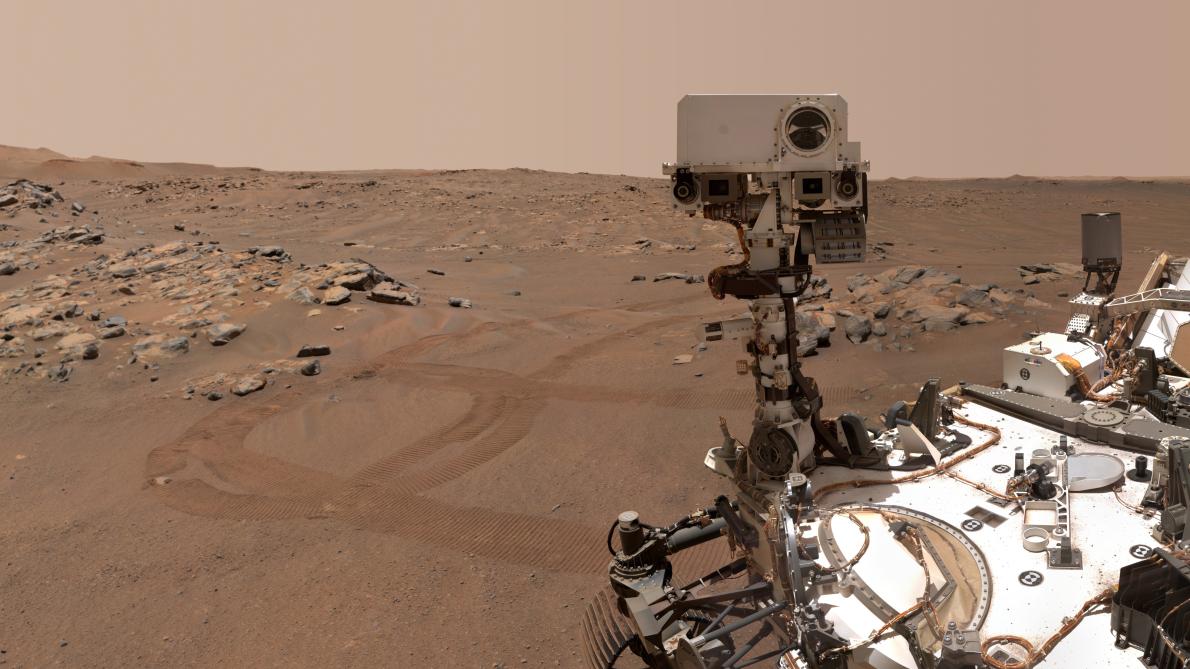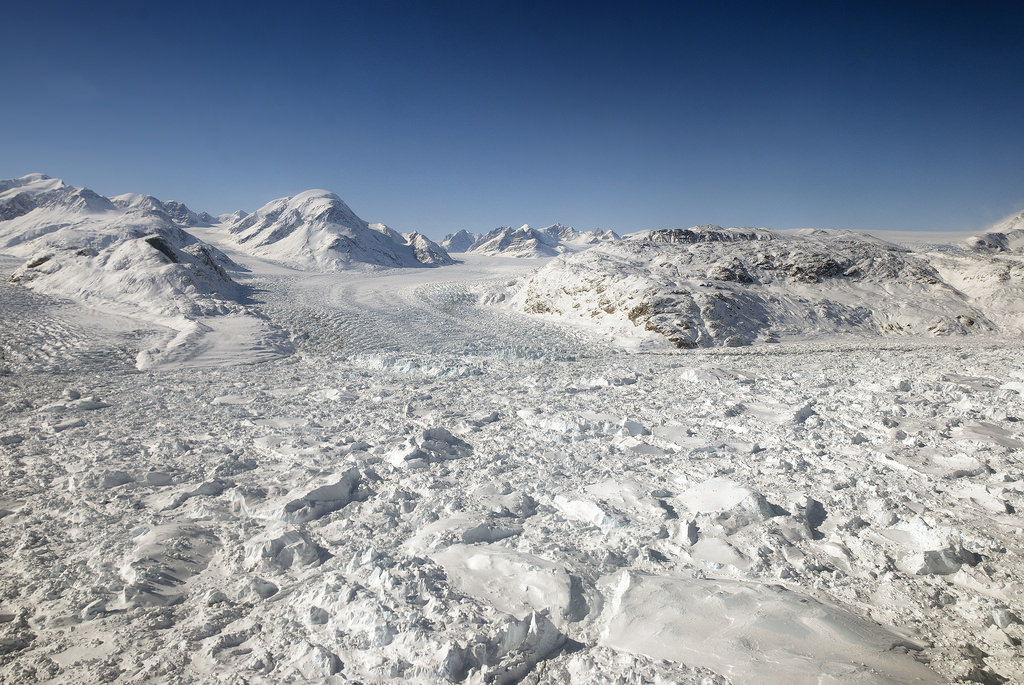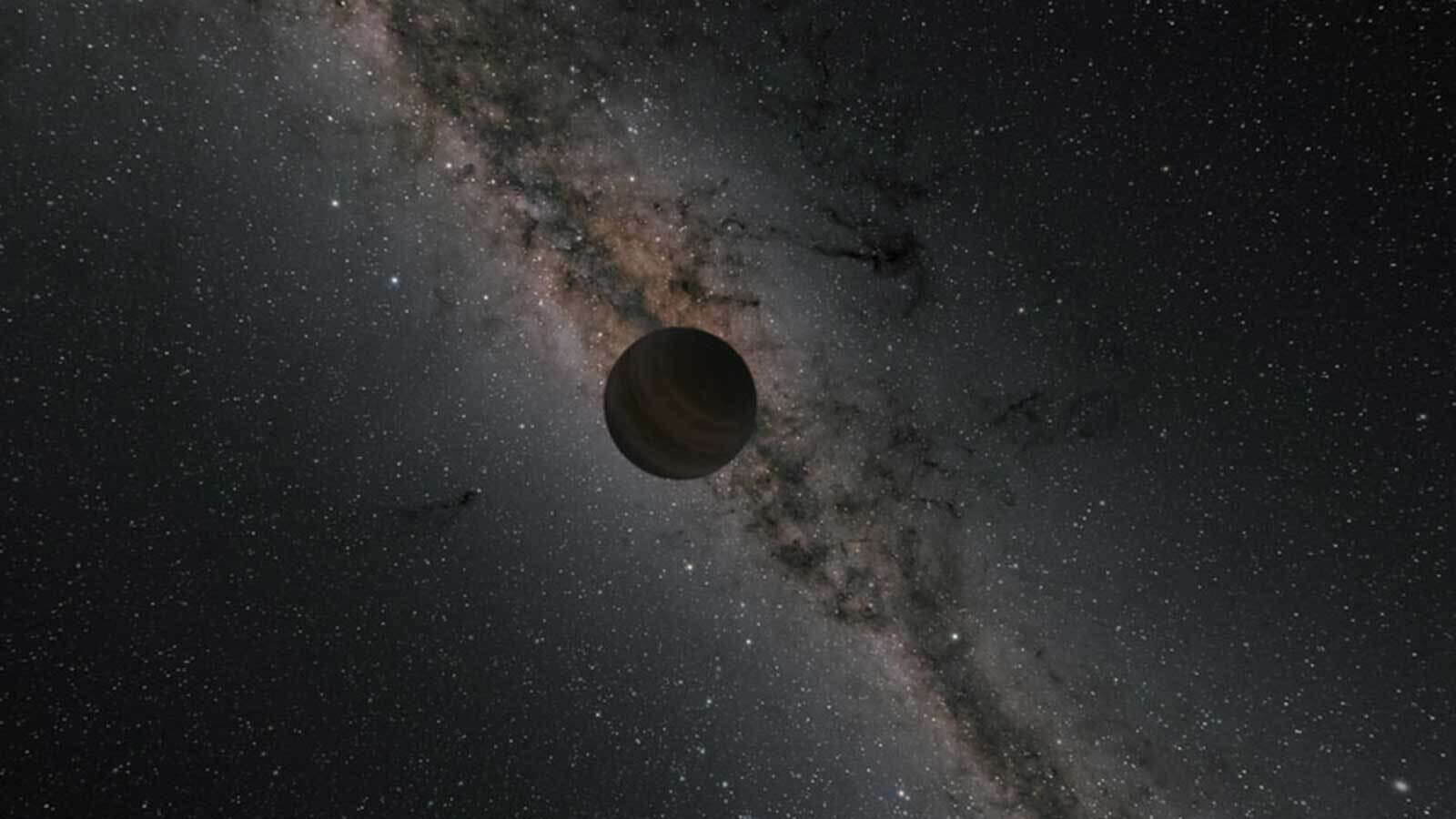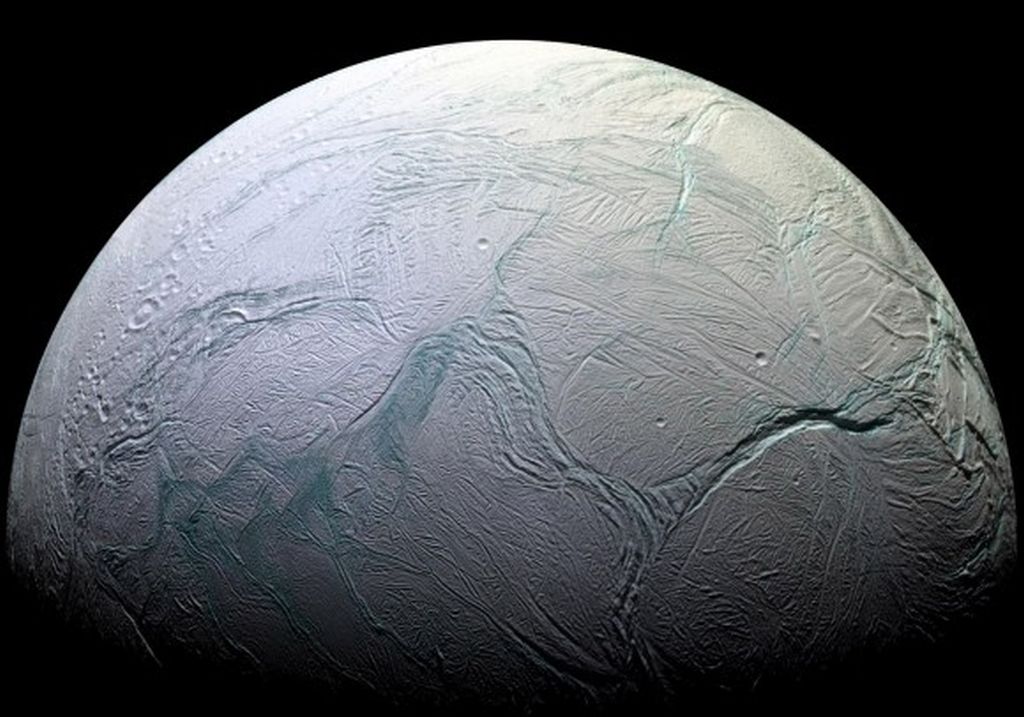When NASA’s Voyager spacecraft visited Saturn’s moon Enceladus, they found a body with young, reflective, icy surface features. Some parts of the surface were older and marked with craters, but the rest had clearly been resurfaced. It was clear evidence that Enceladus was geologically active. The moon is also close to Saturn’s E-ring, and scientists think Enceladus might be the source of the material in that ring, further indicating geological activity.
Since then, we’ve learned a lot more about the frigid moon. It almost certainly has a warm and salty subsurface ocean below its icy exterior, making it a prime target in the search for life. The Cassini spacecraft detected molecular hydrogen—a potential food source for microbes—in plumes coming from Enceladus’ subsurface ocean, and that energized the conversation around the moon’s potential to host life.
Now a new paper uses modelling to understand Enceladus’ chemistry better. The team of researchers behind it says that the subsurface ocean may contain a variety of chemicals that could support a diverse community of microbes.
Continue reading “The Interior of Enceladus Looks Really Great for Supporting Life”


